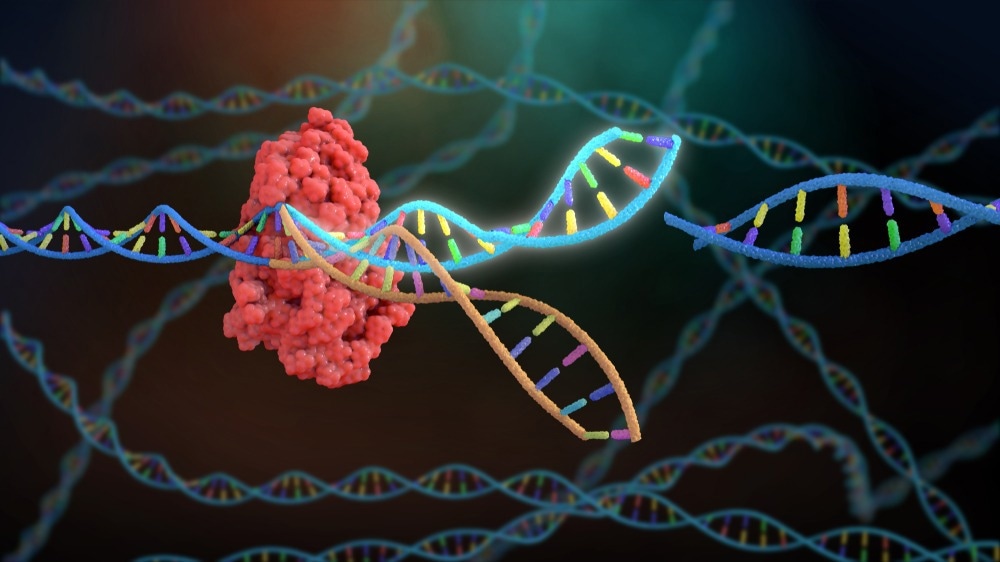CRISPR-Cas9 is frequently used to alter the genome by researching and editing disease-related genes. However, this approach is coupled with undesirable side effects including mutations and toxicity. As a result, a new technique that decreases these adverse effects is required to increase its utility in business and medicine.

Image Credit: Nathan Devery/Shutterstock.com
Scientists from Kyushu University in southern Japan and Nagoya University School of Medicine in central Japan have now devised an efficient genome-editing technology that drastically decreases mutations, paving the way for more effective treatment of genetic diseases with fewer undesirable changes. Their research was published in the journal Nature Biomedical Engineering.
CRISPR-Cas9 genome-editing technology has transformed the medicine and food industries. Cas9 nuclease, an enzyme that cuts DNA, is introduced into the cell together with a synthetic guide RNA (gRNA) that directs the enzyme to the correct spot. Unwanted genes can be eliminated and new (functional) genes can be readily and swiftly inserted by editing the genome.
One disadvantage of genome editing is the growing concern about mutations and off-target effects. This is frequently caused by the enzyme targeting genomic regions with similar sequences to the target location.
When genes are altered, mutations at the chromosome level can develop, which has hampered clinical trials of gene therapy for cancer and even resulted in the deaths of people receiving treatment for muscular dystrophy.
The researchers speculated that existing Cas9 editing procedures produce excessive DNA cleavage, resulting in some of the mutations.
To test this theory, a team led by Assistant Professor Masaki Kawamata of Kyushu University and Professor Hiroshi Suzuki of Nagoya University Graduate School of Medicine built an “AIMS” system in mouse cells that measured Cas9 activity individually for each chromosome.
Their findings revealed that the most often utilized strategy was associated with a high level of editing activity. They found that the high activity was generating undesirable side effects, therefore they looked for gRNA modification ways to lower it.
They discovered that adding an additional cytosine to the 5' end of the gRNA worked as a “safeguard” against overactivity and permitted control over DNA breakage. This fine-tuning method was dubbed “safeguard gRNA” ([C]gRNA).
Their findings were startling. Off-target effects and cytotoxicity were minimized, the effectiveness of single-allele selective editing was boosted, and the effectiveness of homology-directed repair, the most often used mechanism for DNA double-strand break repair, was improved using their new technique.
Researchers explored a rare condition called fibrodysplasia ossificans progressiva to test its usefulness in a medical setting. They were able to establish the identical genotype to the human version of the disease using a mouse model.
They were then able to accurately repair damage down to a single nucleotide exactly in the disease-associated allele causing the disease using patient-derived iPS cells, demonstrating their technique’s utility as a safe and efficient gene therapy method.
The researchers also created the first mathematical model of the relationship between different genome-editing patterns and Cas9 activity, allowing the user to simulate the outcomes of genome editing in an entire cell population. This discovery would allow researchers to identify the Cas9 activity that maximizes efficiency, lowering the vast expenses and labor required.
We established a new genome editing platform that can maximize the desired editing efficiency by developing activity-regulating [C]gRNAs with appropriate Cas9 activity. Furthermore, we found that ‘safeguard gRNA’ can be applied to various CRISPR tools that require gRNAs by regulating their activities, such as those using Cas12a, which has a different DNA cleavage mechanism.”
Hiroshi Suzuki, Professor, Graduate School of Medicine, Nagoya University
“For techniques that use Cas9 to activate or repress genes of interest, such as CRISPR activation and CRISPR interference, excessive induction or suppression of gene expression may be not useful and even harmful to cells. Controlling expression levels by [C]gRNA is an important technology that can be used for various applications, including the implementation of precise gene therapy,” adds Hiroshi Suzuki.
The group is now developing a business plan to promote the new genome editing platform.
In particular, we believe that this technology can make a significant contribution to the medical field. We are currently evaluating its therapeutic efficacy and safety for selected target diseases in cell and animal experiments and using it to help develop therapeutic drugs and gene therapy methods, especially for rare diseases for which no treatment methods have yet been established.”
Masaki Kawamata, Assistant Professor, Kyushu University
Source:
Journal reference:
Kawamata, M., et al. (2023). Optimization of Cas9 activity through the addition of cytosine extensions to single-guide RNAs. Nature Biomedical Engineering. doi.org/10.1038/s41551-023-01011-7.